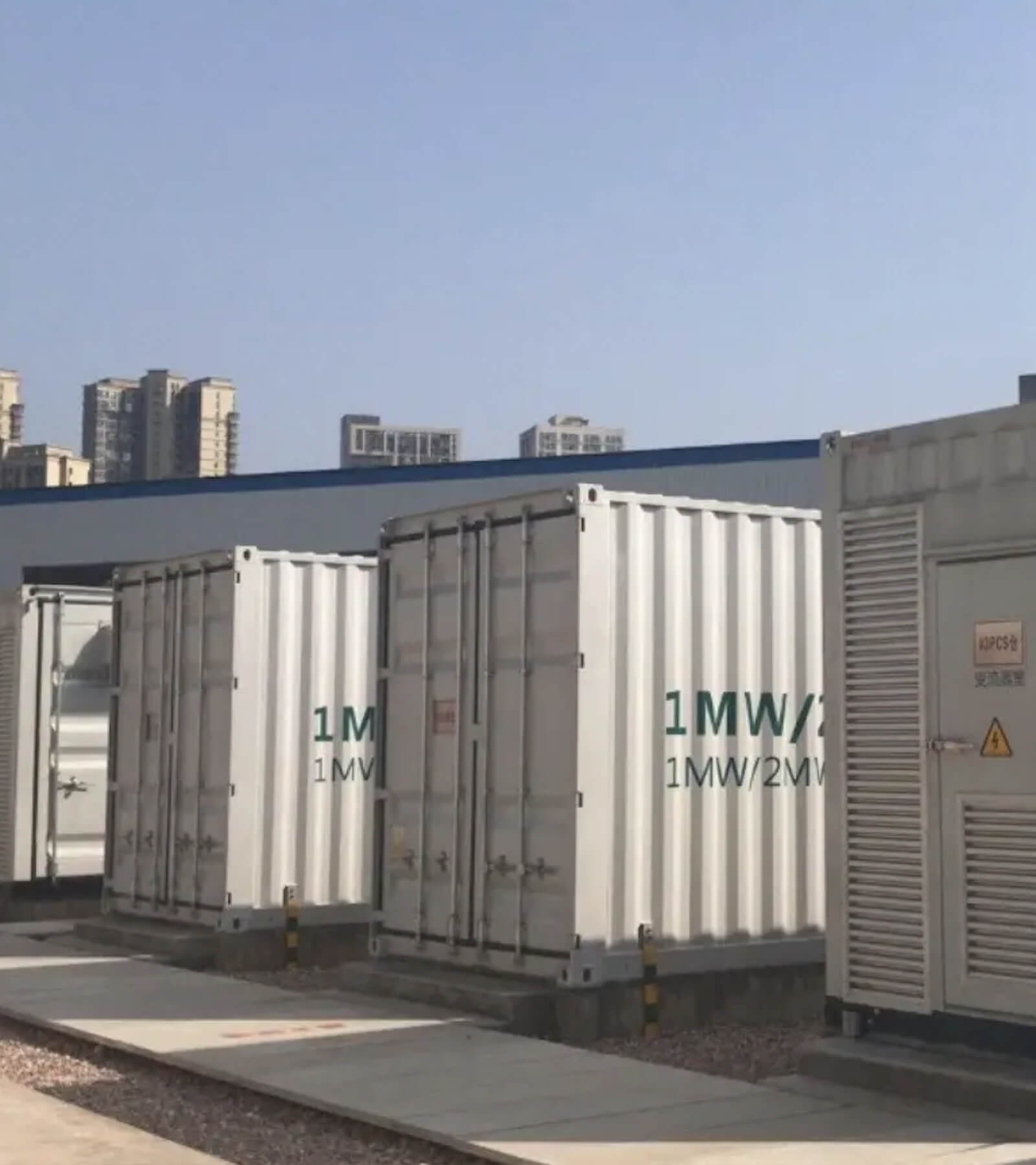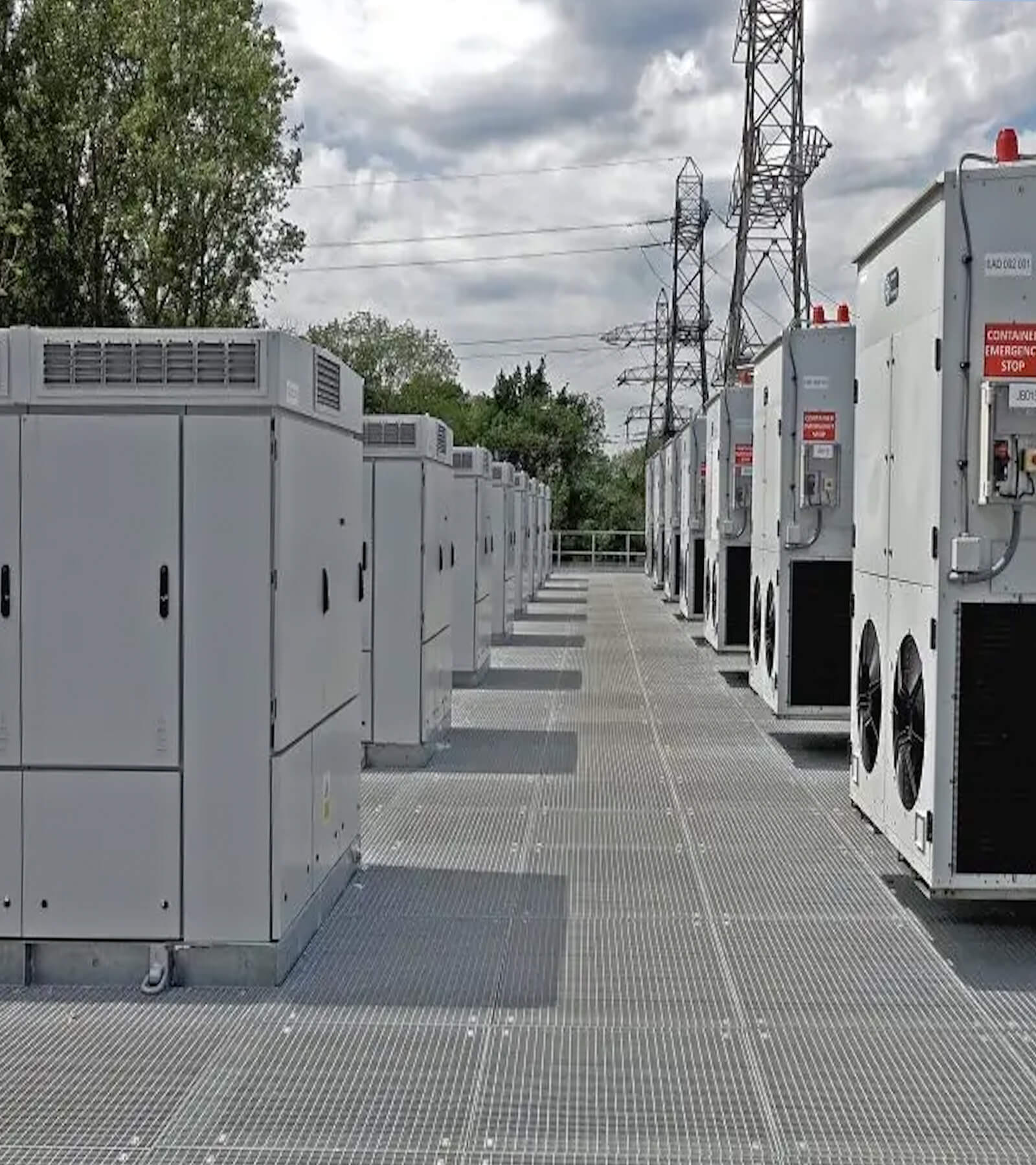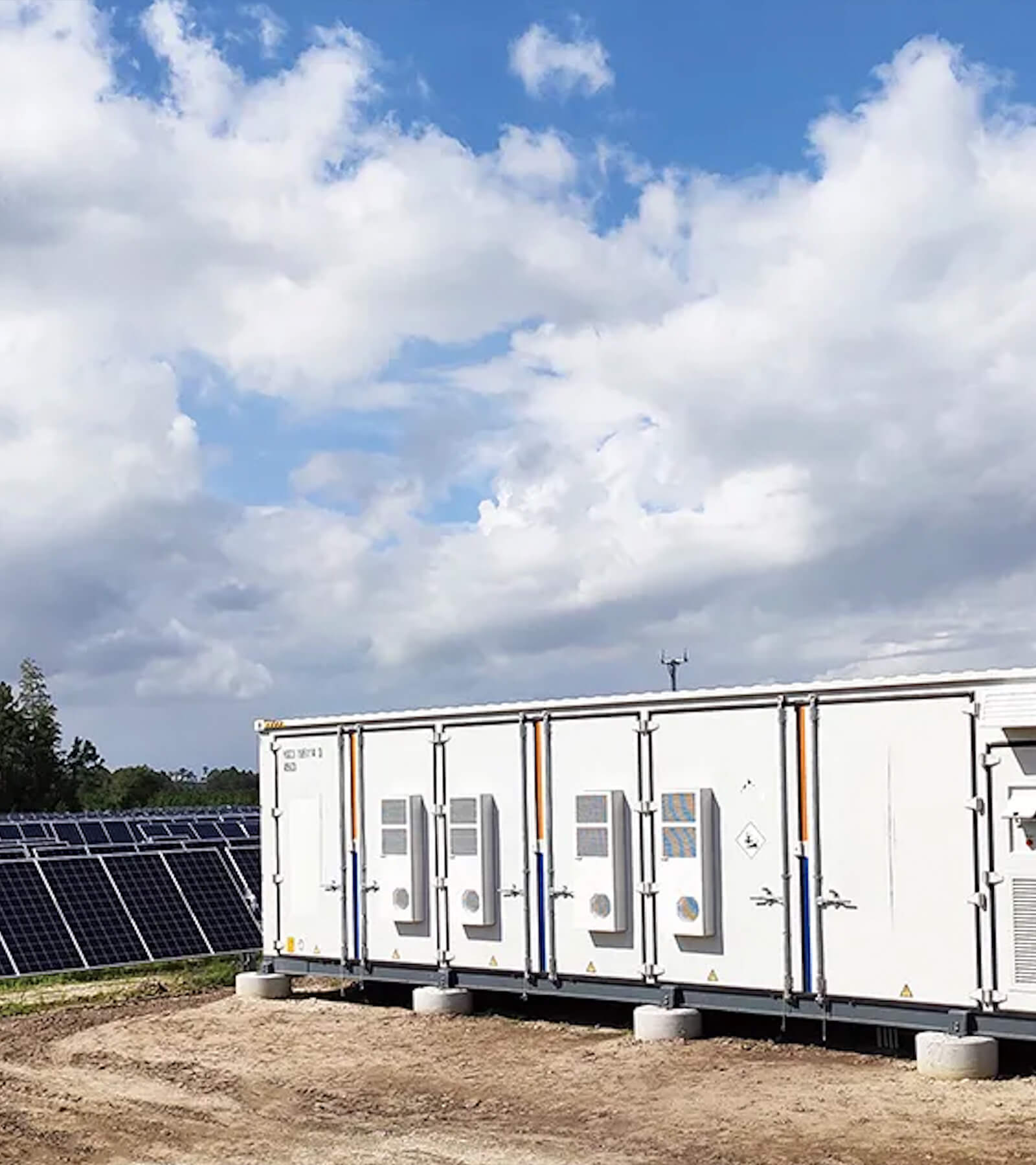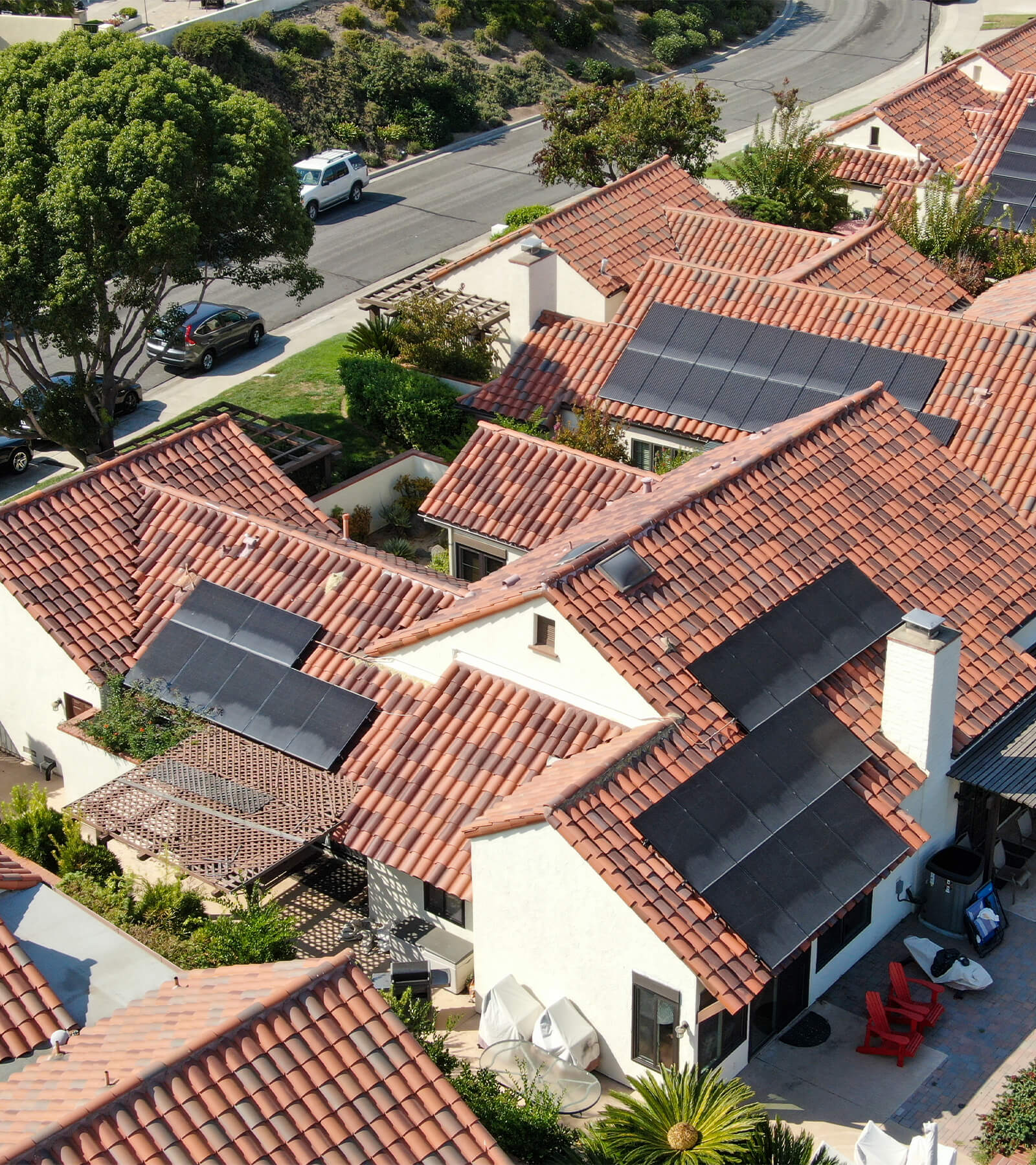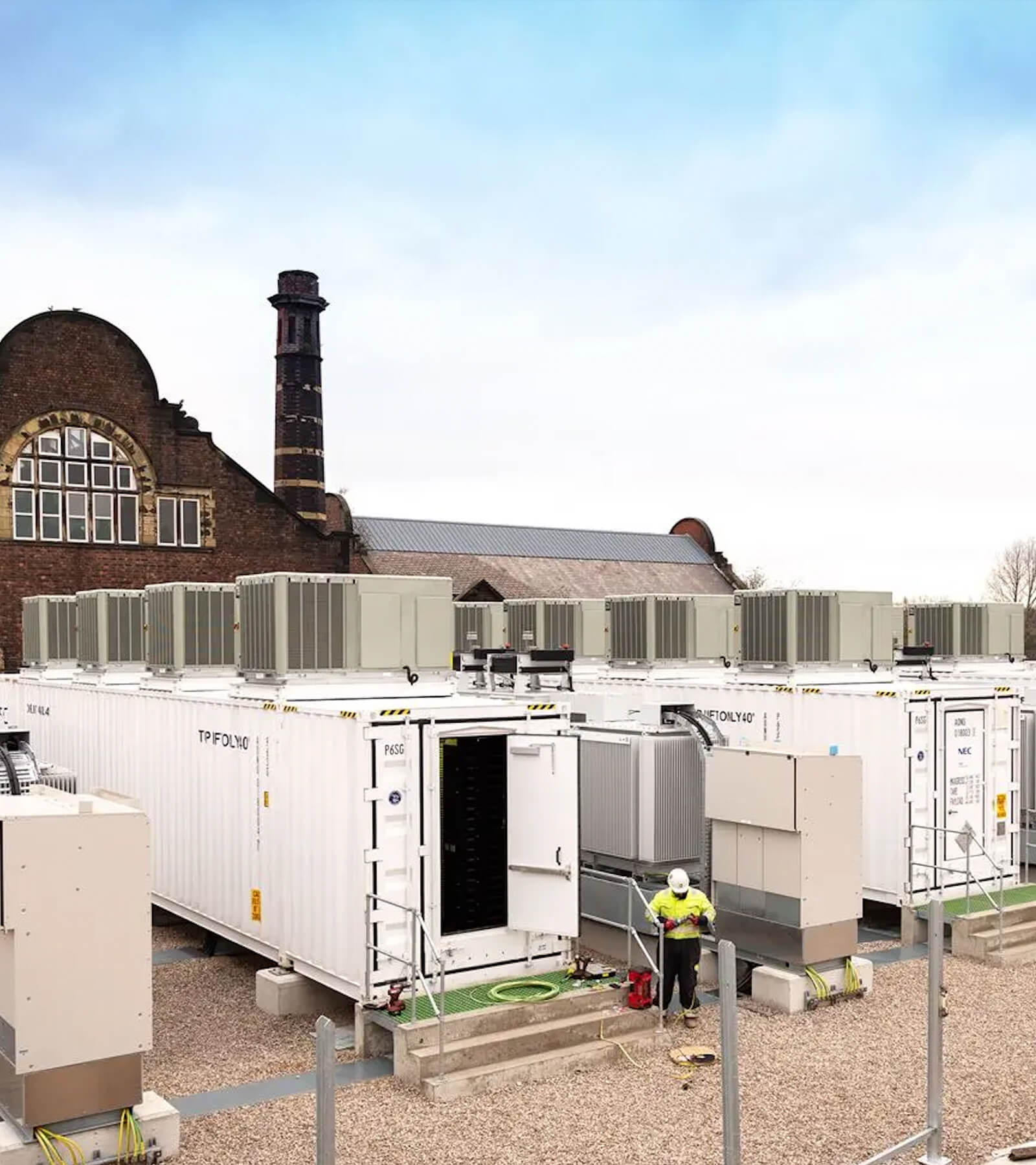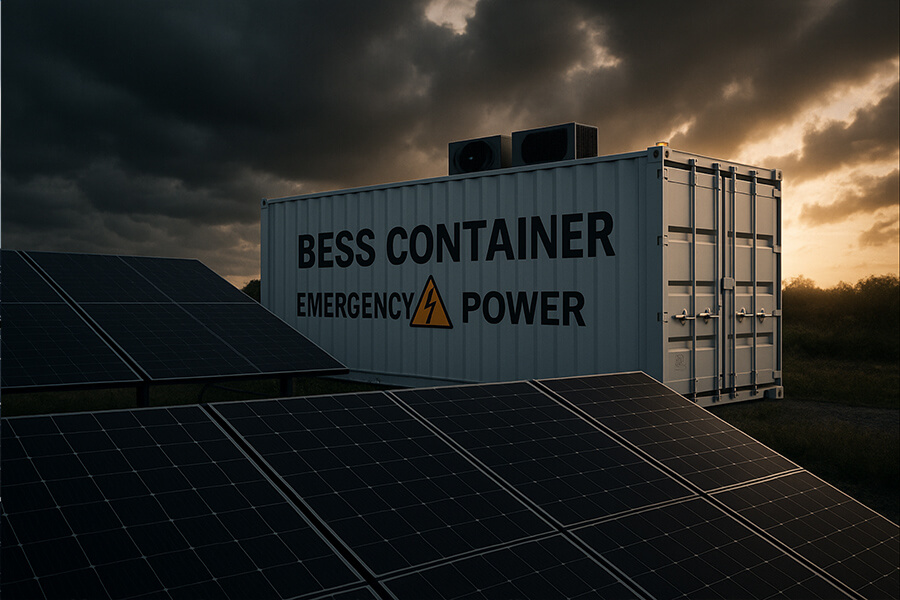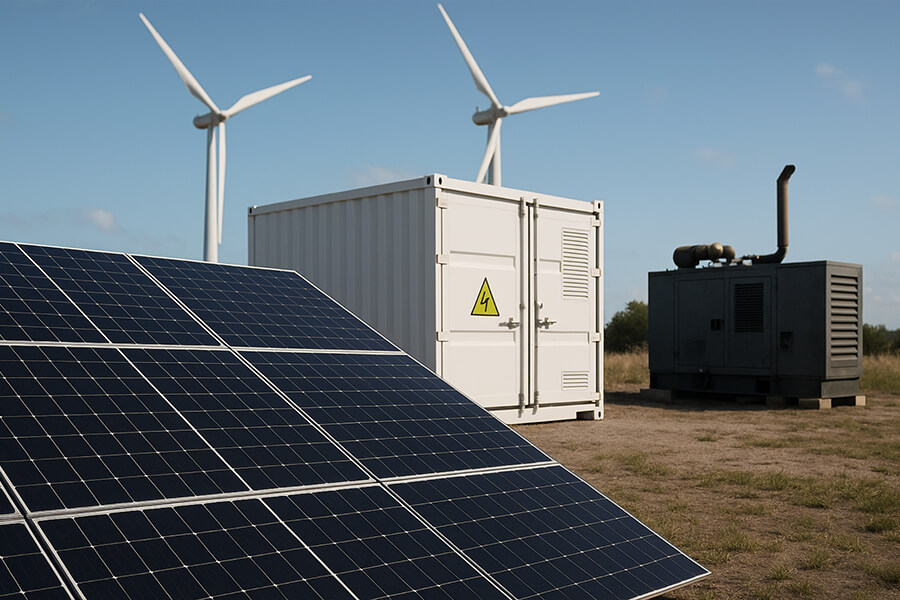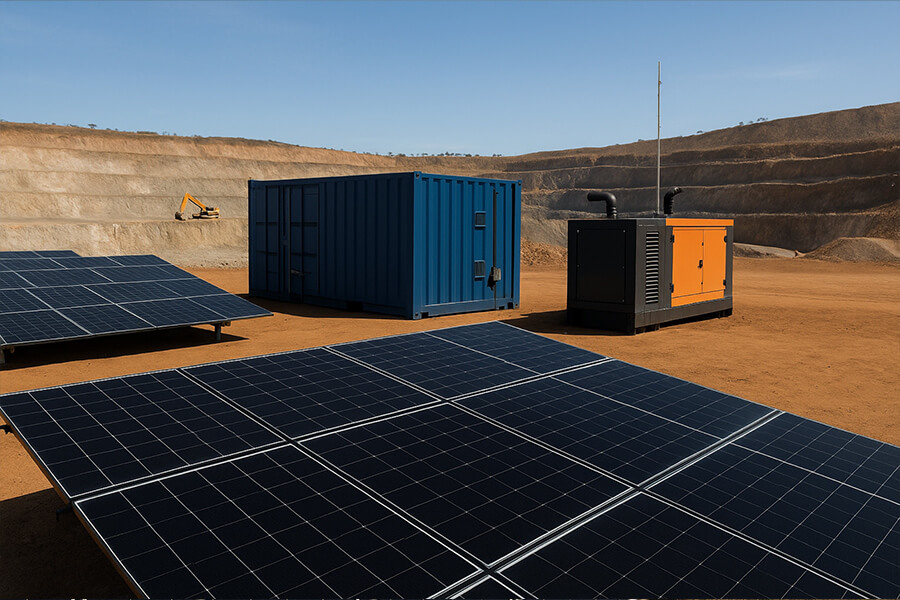As renewables surge (hello, 2025!), the grid loses its stabilizing “training wheels” (traditional inertia), becoming a nervous tightrope walker. Enter BESS Container Frequency Regulation: the unassuming box acting like a caffeinated ninja. These containerized batteries detect frequency wobbles and inject/absorb power within milliseconds – orders of magnitude faster than conventional plants. This provides critical virtual inertia and ultra-fast frequency response (FFR), preventing blackouts (goodbye, falling pianos!) and ensuring stability. For grid operators, it’s essential reliability. For energy traders, it’s a high-speed arbitrage and ancillary services cash machine. Discover how Maxbo Solar engineers these grid-saving, profit-generating ninjas. BESS Container Frequency Regulation is the grid’s not-so-secret weapon.
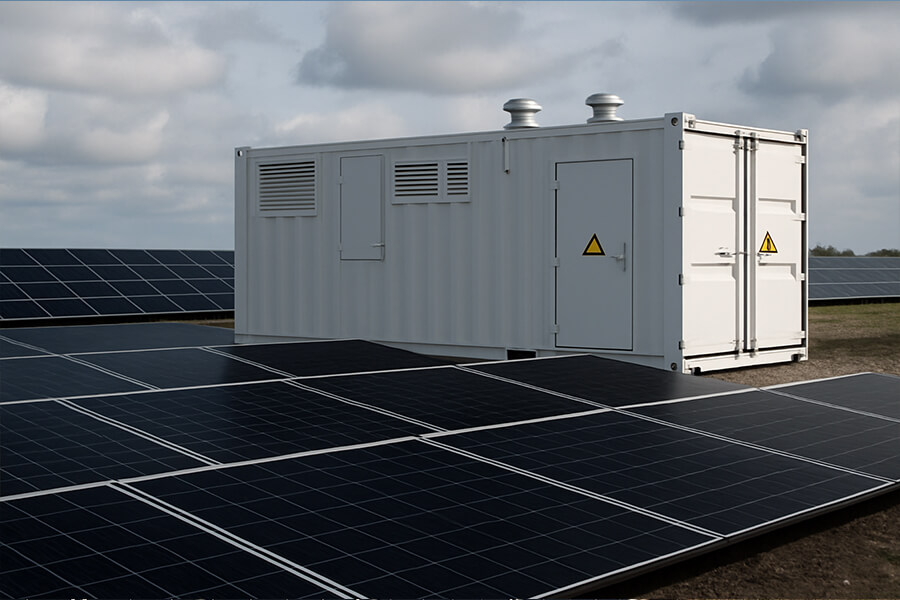
The Wobbly Tightrope Walker (The Grid’s New Reality)
(Humorous Hook)
Picture your power grid as a nervous tightrope walker. Gone are the days of sturdy, predictable coal and nuclear “training wheels” (those trusty, inertia-rich synchronous generators). Now, our aerial artist is juggling solar panels and wind turbines while sipping a kale smoothie – a fitting metaphor for the renewable energy surge. Enter stage left: a gust of wind dies down (bye-bye, wind power!), a rogue cloud parkours across the sun (solar output plunges!), and an entire nation simultaneously hits ‘play’ on the latest Netflix sensation (demand spike!). Cue the dramatic wobble! One misstep here isn’t just embarrassing; it plunges entire cities into darkness.
(Professional Core & Data-Driven Reality)
This isn’t just theatrics; it’s the daily reality for grid operators in 2025. The massive integration of renewable energy sources (RES), while crucial for decarbonization, has fundamentally altered grid dynamics. RES like solar PV and wind are inherently intermittent and crucially, they lack rotational inertia. Traditional thermal and hydro plants provided this inertia naturally – their massive spinning turbines acted like flywheels, resisting sudden changes in frequency and buying precious seconds for other resources to respond. As RES replace these plants, system-wide inertia plummets, making the grid far more vulnerable to frequency deviations caused by even minor imbalances between supply and demand.
The Inertia Vacuum & Rising Instability:
| Traditional Grid (Pre-Dominance of RES) | Modern Grid (High RES Penetration – 2025) | Impact of Change |
|---|---|---|
| High System Inertia (Spinning Mass) | Significantly Reduced System Inertia | Frequency changes happen much faster & more severely after an imbalance [1] |
| Slow(er), Predictable Changes | Requires Response in < 1-2 Seconds (often < 500ms) | Grid becomes inherently less stable |
| Seconds/Minutes for Conventional Response | Requires Response in < 1-2 Seconds (often < 500ms) | Existing thermal/gas plants often too slow to prevent instability [2] |
| Lower Cost of Frequency Management | Escalating Costs for Ancillary Services | FFR markets seeing premiums of 20,000−50,000+ per MW/year in key regions [3] |
The Data Tells the Story:
- Renewable Penetration: Global electricity generation from renewables surpassed 40% in 2024 and continues to climb steeply [1]. Regions like California (CAISO) and Ireland (EirGrid) routinely see instantaneous RES penetration exceeding 70-80% on favorable days [2, 4].
- Inertia Decline: Studies in high-RES grids show system inertia levels can be 40-60% lower than traditional grids, drastically reducing the time available for corrective action – often down to less than half a second before critical frequency thresholds are breached after a major fault [2, 5].
- The Cost of Wobbles: Frequency instability isn’t just a technical headache; it’s expensive. Under-frequency events can trigger automatic load shedding (blackouts). The 2019 UK outage, partly attributed to low inertia and slow response, cost an estimated £100+ million in lost economic activity and highlighted the critical vulnerability [6]. Grid operators now face millions in potential penalties for failing to meet stringent new frequency control standards like Dynamic Containment (UK) or similar FFR requirements globally [3, 7].
The Undeniable Need:
This perfect storm of declining inertia, rising intermittency, and faster potential failures means the critical need for Fast Frequency Response (FFR) is no longer theoretical – it’s an operational imperative. Grid operators desperately need resources that react not like sleepy sloths (traditional plants ramping up), but like hyper-vigilant superheroes, capable of injecting or absorbing massive amounts of power within milliseconds to arrest frequency deviations before they spiral out of control. The stability of the entire grid literally depends on it.
The Problem: When “Fast” Isn’t Fast Enough
(Humorous Analogy)
Imagine the grid hits a sudden frequency dip – maybe a massive gas turbine trips offline. Using traditional power plants (like combined cycle gas or even hydro) to fix this is like trying to stop a grand piano plummeting from a 10th-story window… by faxing detailed instructions to a forklift team three blocks away. You draft the fax (“URGENT: PIANO FALLING! SEND HELP!”), wait for it to transmit (zzzz…), hope someone checks the machine, then watch as they finally amble over, maybe grab some coffee, then start figuring out how to operate the forklift. By the time they even begin to react? CRUNCH. The grid equivalent of that crunch? Widespread blackouts and fried equipment. Grid frequency deviations might unfold over seconds, but the critical damage – the point of no return – happens in milliseconds.
(Professional Core & The Harsh Reality of Speed)
This isn’t just a funny image; it’s a precise technical limitation with severe consequences. Frequency instability is a primary threat to modern power systems. When frequency deviates significantly outside the narrow standard band (e.g., 59.95 – 60.05 Hz in many 60Hz grids, or 49.95 – 50.05 Hz in 50Hz grids), the risks escalate rapidly:
- Cascading Blackouts: Under-frequency events trigger automated load shedding (rolling blackouts) to prevent total collapse. Over-frequency events can force generators offline. A single event can cascade uncontrollably across regions. The 2003 Northeast Blackout affected 55 million people and cost an estimated $6 billion USD [1]. While systems have improved, the risk profile is higher today due to lower inertia.
- Equipment Damage: Sensitive industrial machinery, data center operations, and even household electronics suffer stress or failure from sustained frequency deviations outside tolerance limits (often as narrow as ±0.5 Hz for brief periods). This translates to billions in potential damage and lost productivity annually [2].
- Accelerated by Declining Inertia: As established, the grid’s natural “shock absorber” (rotational inertia) is dwindling. Lower inertia means frequency changes faster and more severely for any given power imbalance. What was once a manageable dip requiring response in 10-30 seconds might now become a nosedive needing stabilization in less than 500 milliseconds to avoid catastrophic outcomes [3, 4].
Why Traditional Plants are the Faxing Forklift Team:
| Resource Type | Typical Response Time (From Event Detection to Full Power Delivery) | Why It’s Too Slow for Modern FFR Needs (2025) |
|---|---|---|
| Coal / Nuclear | 30 seconds to Several Minutes | Glacially slow. Designed for baseload, not rapid maneuvering. |
| Combined Cycle Gas (CCGT) | 1-5 Minutes (From “Warm” / “Hot” state) | Faster than coal, but still orders of magnitude too slow. |
| Hydro | 10-30 Seconds (Best case for some) | The fastest conventional, but still struggles to hit < 1s targets. Limited by mechanical governor action & water inertia. |
| Modern Grid Need (FFR) | < 500 Milliseconds (0.5 seconds), often < 100ms is required [5, 6] | Needed to arrest the rapid frequency decline/rise caused by faults in low-inertia systems before instability thresholds are breached. |
The Tangible Costs of Slowness:
- Grid Operator Burden: Reliance on slow resources forces grid operators to maintain larger, more expensive spinning reserves (plants running below capacity, ready to ramp) just to have something available that’s “fast enough” by old standards. This is incredibly inefficient and costly. Estimates suggest ancillary service costs (including reserves) have increased by 15-30% in grids with high RES penetration since 2020 [7].
- Market Penalties: Grid codes now enforce strict Fast Frequency Response (FFR) requirements with severe financial penalties for non-compliance or missing response targets. For example, National Grid ESO (UK) can levy penalties of £10,000 – £50,000+ per MW per event for failures in services like Dynamic Containment [8].
- Trader Volatility: Energy traders face significantly increased market volatility due to the heightened risk of frequency events triggering sudden, large imbalances and price spikes. Managing portfolios becomes riskier and more complex without access to truly fast-response assets [9].
- Event Frequency: Studies show grids with high RES and low inertia experience significantly more frequency deviations requiring corrective action. ENTSO-E reports indicate a measurable increase in frequency incidents needing automated response across Europe correlated with RES growth [10].
Enter the BESS Container: The Grid’s Millisecond Ninja
(Humorous Personification)
Forget faxing forklift teams. Meet the Battery Energy Storage System (BESS) Container: the silent, unassuming steel box lurking near a substation or wind farm that’s basically a caffeinated, hyper-vigilant grid ninja. It doesn’t generate power; it dances with it – pirouetting between charge and discharge faster than you can say “frequency dip!” One moment it’s absorbing excess electrons like a sponge (stabilizing over-frequency), the next it’s unleashing stored megawatts with lightning speed (arresting under-frequency). All while sipping its metaphorical triple espresso. Sleep is for sloths (and coal plants).
(Professional Core: Speed, Mechanism & Advantage)
This isn’t magic; it’s electrochemistry and power electronics operating at warp speed. BESS Containers provide ultra-fast frequency response (FFR) by injecting or absorbing power within milliseconds. This capability is the critical antidote to the grid’s inertia crisis:
- Blistering Speed: Modern grid-scale BESS achieve full response typically within 100 milliseconds (0.1 seconds), with advanced systems hitting < 20ms from event detection to full power delivery [1, 2]. This is orders of magnitude faster than even the quickest conventional resources.
- The Virtual Inertia Effect: By responding almost instantaneously to frequency deviations (measured continuously by advanced inverters), BESS mimics the stabilizing effect of physical rotational inertia – often termed Synthetic Inertia or Virtual Inertia [3]. They provide the crucial “first kick” to stabilize the grid, buying time for slower resources if needed.
- Precision & Flexibility: BESS can modulate power output with extreme precision (e.g., +/- 1 MW increments), providing exactly the amount needed, exactly when needed. They can also seamlessly switch between charging (absorbing power) and discharging (injecting power) multiple times per second [4].
Why BESS Containers are the Ultimate Grid Ninja:
| Feature | BESS Container Performance (2025) | Traditional “Fast” Resource (e.g., Gas Peaker) | Significance |
|---|---|---|---|
| Response Time | < 100 ms (Often < 20 ms) [1, 2] | 5 – 30 Seconds (Minimum) | 50x – 1500x Faster. Arrests deviations before they become critical. |
| Ramp Rate | 0% to 100% Power in Milliseconds | 10-100 MW/minute | Instantaneous Power Delivery. No ramp-up lag. |
| Precision Control | Sub-MW Granularity | Limited Granularity (Often > 1 MW steps) | Surgical Accuracy. Delivers only the precise power needed, minimizing waste. |
| Dual Function (Charge/Discharge) | Seamless, Instant Switching | Discharge Only (Typically) | Comprehensive Stabilization. Corrects both under- AND over-frequency events. |
| Physical Deployment | Weeks (Plug-and-Play Containers) [5] | Years (Permitting, Construction) | Rapid Deployment. Critical for meeting urgent grid needs in high-RES areas. |
The Ninja’s Paycheck: Value Beyond Stability
For grid operators, BESS is indispensable reliability. For energy traders and asset owners, it’s a high-speed revenue generator:
- Premium Ancillary Services: FFR markets like Dynamic Containment (UK), Fast Frequency Response (AUS/NZ), and RegD/RegA (PJM, USA) pay substantial premiums for sub-second response. BESS Containers consistently capture the highest-value tiers due to their speed and accuracy. Current market values can reach 40,000−80,000+ per MW per year for the fastest response services [6, 7].
- Arbitrage + Stacking: BESS doesn’t just do FFR. The same container can perform energy arbitrage (buy low, sell high) during off-peak hours, provide voltage support, or participate in capacity markets – stacking multiple revenue streams to maximize ROI [8].
- Avoiding Penalties: By ensuring reliable, instantaneous response, BESS owners avoid the hefty penalties (up to £50,000/MW/event in some markets [9]) that plague slower or unreliable resources.
- Scalability & Location: Containers can be deployed precisely where inertia is lowest or congestion is highest (e.g., near large wind farms or weak grid sections), maximizing their local impact and value [10].
The Value Proposition: Why Grid Operators & Traders Love This Ninja
(Humorous Benefit)
For grid operators, deploying BESS Containers is like trading their clunky fax-machine forklift team for a squad of teleporting ninjas. Less stress (fewer frantic control room alarms), far fewer dropped pianos (major blackouts averted), and undeniably cooler performance reports (showing millisecond responses instead of agonizing minutes). For energy traders and aggregators? It’s the ultimate market arbitrage speed demon – slicing through price differentials faster than a katana through silk and unlocking vaults of value in high-frequency grid services.
(Professional Core: Quantifiable Benefits)
For Grid Operators: Stability, Efficiency & Compliance
- Enhanced Grid Stability & Reliability: BESS Containers act as the grid’s immune system, preventing frequency excursions before they cascade. Studies show strategically placed BESS can reduce the probability of major under-frequency load shedding events by over 60% in vulnerable grids [1]. This directly translates to improved SAIDI/SAIFI reliability metrics and reduced societal costs from outages [2].
- Reduced Need for Spinning Reserve: Maintaining fossil fuel plants in “spinning reserve” (running below capacity, ready to ramp) is incredibly inefficient and costly. BESS provides equivalent or superior response without fuel consumption or emissions. Analysis by EPRI indicates that each MW of fast-responding BESS can displace 1.5-2.5 MW of costly thermal spinning reserve capacity, saving grid operators 15,000−40,000 per MW per year in avoided reserve costs [3].
- Efficient Renewable Integration: BESS is the essential enabler for higher renewable penetration. By providing instantaneous smoothing and FFR, BESS mitigates the variability of wind and solar, allowing grids to safely integrate significantly more RES. CAISO estimates that targeted BESS deployments allow for 5-10% higher instantaneous RES penetration limits without compromising stability [4].
- Compliance with Stringent Grid Codes: Modern grid codes (e.g., NERC PRC-027, ENTSO-E RfG) mandate specific, ultra-fast frequency response capabilities. BESS Containers are uniquely suited to meet and exceed these requirements (e.g., National Grid’s Dynamic Containment Low requiring < 1s response), ensuring operators avoid massive regulatory fines and maintain their operating licenses [5].
Grid Operator Value Summary:
| Benefit | Impact (2025) | Quantifiable Value/Savings |
|---|---|---|
| Reduced Blackout Risk | >60% reduction in major frequency event probability in vulnerable areas [1] | Millions saved per avoided major outage [2] |
| Lower Spinning Reserve | 1 MW BESS displaces 1.5-2.5 MW thermal reserve [3] | 40k / MW / year saved [3] |
| Higher RES Integration | Enables +5-10% instantaneous renewable penetration [4] | Accelerates decarbonization goals, defers grid upgrades |
| Compliance Assurance | Meets fastest FFR standards (e.g., DC Low <1s) [5] | Avoids penalties up to £50k/MW/event [6] |
| Reduced Curtailment | Absorbs excess renewable generation during oversupply | Saves $/MWh of wasted clean energy |
For Energy Traders & Aggregators: High-Speed Revenue & Risk Mitigation
- Premium Revenue from High-Value Ancillary Services: FFR markets are where speed literally pays. BESS Containers capture the highest-value tiers in markets like:
- UK: Dynamic Containment (Low): Consistently clearing at £17 – £25 / MW / hour (Annualized: ~£150k – £220k / MW / year) [7].
- USA (PJM): Reg D: Performance-based payments requiring sub-second response, averaging 30−50 / MW / hour in 2025 (~260k−440k / MW / year) [8].
- Australia (AEMO): 6-Second FCAS: Prices frequently spiking above $15,000 / MW / hour during tight conditions, with BESS perfectly positioned to capture these peaks [9].
- Lightning-Fast Arbitrage: BESS algorithms exploit intra-hour and even 5-minute price volatility caused by renewable fluctuations. With near-instantaneous response, they buy at negative prices (during oversupply) and sell seconds/minutes later during scarcity events, capturing spreads often >$100/MWh that slower assets miss entirely [10].
- Optimized Revenue Stacking: A single BESS Container is a multi-tool for market value. Advanced traders seamlessly stack revenues: providing FFR during critical hours, switching to energy arbitrage during peak price spreads, and offering capacity or voltage support – maximizing annual revenue potential to 250,000−400,000+ per MW for optimally managed assets [11].
- Penalty Avoidance & Enhanced Credit: Reliable, automated BESS performance ensures traders meet stringent service obligations, avoiding crippling penalties and building strong reputations with grid operators and offtakers, leading to better contract terms and market access [12].
Trader Value Summary:
| Revenue Stream | Market Example (2025) | Potential Annual Value per MW | Key Advantage |
|---|---|---|---|
| Ultra-Fast FFR (e.g., DC Low) | UK National Grid ESO | £150,000 – £220,000 [7] | Highest $/MW for speed & accuracy |
| Fast Frequency Regulation (e.g., Reg D) | PJM Interconnection (USA) | 440,000 [8] | Performance-based premiums |
| FCAS (6-sec/60-sec) | AEMO (Australia) | 150,000+ [9] | Captures extreme price spikes |
| Energy Arbitrage | All major wholesale markets (Intra-hour/5-min trading) | 100,000+ [10] | Exploits renewable-driven volatility |
| Capacity Payments | Markets with capacity auctions (e.g., UK T-1, US ISO RPM) | 60,000 [11] | Stable base revenue |
| TOTAL (Stacked Potential) | Optimized Portfolio | 400,000+ / MW / year [11] | Maximizes ROI through intelligent dispatch |
The Not-So-Secret Ingredient: Containerized Brilliance
(Humorous Touch)
Why containers? Because building a grid ninja dojo should be as easy as ordering flat-pack furniture – modular, predictable, and arriving ready for action – but delivering megawatt-scale power and millisecond reflexes, with zero risk of leftover screws or existential despair.
(Professional Core: The Container Advantage)
The containerized form factor isn’t just packaging; it’s the critical enabler that transforms BESS from a complex engineering project into a rapidly deployable, scalable grid asset. This standardized approach unlocks unparalleled advantages:
-
Revolutionary Deployment Speed:
- Traditional Power Plant (Gas Peaker): 18-36+ months (permitting, civil works, construction, commissioning) [1].
- Traditional “Behind-the-Fence” BESS (Non-Containerized): 12-24 months (custom design, complex onsite integration) [2].
- Containerized BESS: 8-16 weeks from order to commercial operation. Pre-fabricated, pre-wired, and factory-tested containers ship via standard freight. Site work is minimized: level concrete pad, interconnect, commission. Plug-and-play power [3, 4]. This speed is essential for addressing urgent grid needs, like inertia deficits identified in TSO stability studies.
-
Effortless, Granular Scalability:
- Start small (e.g., 2-5 MW / 5-10 MWh) to meet immediate FFR needs or budget constraints.
- Scale incrementally by adding containers as demand grows (more renewables, new ancillary markets). No need for massive upfront overbuild [5].
- Example: A wind farm adds 10 MW of FFR capacity in 2025 via containers. In 2026, as penetration increases, they seamlessly add another 5 MW, avoiding stranded capital [6].
-
Guaranteed Standardization & Reliability:
- Factory-Built Quality: Rigorous testing in controlled environments ensures consistent, high performance and meets stringent certifications (UL, IEC, DNV) before shipment. Field failure rates for modern containerized BESS are < 1.5% in the first year of operation, significantly lower than field-assembled alternatives [7].
- Predictable Performance: Every container delivers identical, verified response times (<100ms), efficiency (>92% round-trip), and safety features. Grid operators get known quantities, not prototypes [8].
- Simplified Maintenance: Hot-swappable components and standardized designs allow for rapid repairs and upgrades. Spares strategy is simplified across the fleet [9].
-
Unmatched Site Flexibility:
- Location Agnostic: Containers thrive where they’re needed most:
- Grid Edge: Beside substations experiencing congestion or low inertia.
- Renewable Co-location: Directly at wind/solar farms (reducing curtailment, providing local FFR).
- Brownfield Sites: Repurposing industrial land quickly.
- Urban Settings: Noise and footprint managed within standard ISO containers [10].
- Minimal Footprint: High energy density (~250-400 kWh per 20ft/40ft container) maximizes power per square meter [11].
- Location Agnostic: Containers thrive where they’re needed most:
Why Containerization Wins: The Deployment & Flexibility Edge
| Attribute | Containerized BESS (2025) | Traditional Custom BESS Build | Gas Peaker Plant | Significance |
|---|---|---|---|---|
| Time to Operation | 8-16 Weeks [3, 4] | 12-24 Months [2] | 18-36+ Months [1] | Deploy solutions 4x-9x faster to meet urgent grid needs. |
| Capital Cost (Capex) Flexibility | Low Minimum Entry (~$1-2M for small system) + Incremental Adds | High Minimum Threshold (>$10M+) | Very High (>$50M+) | Lower risk, align spend with evolving needs. Accessible to more players. |
| Site Work | Minimal (Pad, Interconnect) | Extensive (Custom Foundations, Complex Wiring) | Massive (Excavation, Structures) | Faster permitting, lower disruption, wider site suitability. |
| Performance Consistency | High (Factory QA/QC, Standardized Designs) [7, 8] | Variable (Field Assembly Risks) | Established but Slow | Grid operators get guaranteed millisecond ninjas, every time. |
| Relocation Potential | Feasible (Containers can be moved) [12] | Very Difficult / Impossible | Impossible | Future-proof investment if grid needs shift. |
Why Maxbo Solar is Your BESS Container Sensei
(Humorous & Confident Transition)
So, you need a squad of grid ninjas deployed yesterday? Welcome to the dojo. At Maxbo Solar, we don’t just ship BESS containers; we craft grid stability masterpieces and forge FFR revenue ninjas. Think of us as the Q to your Bond – equipping you with the cutting-edge tools and intelligence to turn grid volatility into pure mission success (and profit). Only our gadgets come with warranties and a dedicated support team, not just exploding pens.
(Professional Core: Capabilities, Performance & Value)
Maxbo Solar designs and delivers advanced, high-performance BESS container solutions specifically engineered to dominate the most demanding frequency regulation markets. We integrate bleeding-edge technology with battle-tested reliability:
- Ultra-Fast Power Conversion Systems (PCS): Our proprietary PCS architecture delivers sub-100ms (<80ms typical) response times consistently, ensuring you capture the highest-value FFR tiers (like National Grid’s DC Low) and arrest frequency deviations before they escalate [1]. No sloth-like lag here.
- Advanced Battery Management & Safety (BMS): We maximize lifespan (>7,000 cycles @ 80% DoD), performance, and safety using proven, stable LiFePO4 (LFP) chemistry. Our multi-layer BMS with predictive thermal runaway prevention and UL 9540A / NFPA 855 compliance ensures your assets operate safely for years, minimizing downtime and risk [2, 3].
- Built for Global Grid Code Compliance: Our containers are pre-configured to meet the strictest international FFR standards out-of-the-box:
- UK: Exceeds National Grid Dynamic Containment (DC Low/High) specs [4].
- EU: Compliant with ENTSO-E RfG & NC RfG requirements [5].
- USA: Meets FERC 2222, CAISO, PJM Reg D performance mandates [6].
- AU/NZ: AEMO 6-sec & 60-sec FCAS ready [7].
- AI-Driven Energy Management System (EMS): This is your ninja command center. Our smart EMS doesn’t just react; it predicts. It continuously optimizes dispatch for:
- Maximizing Ancillary Service Revenue: Prioritizing the highest-paying FFR markets in real-time.
- Intraday Arbitrage: Seizing >$100/MWh spreads driven by renewable swings with algorithmic precision [8].
- Battery Health Optimization: Intelligently managing DoD, temperature, and cycling to extend asset life and ROI [9].
- Seamless Stacking: Juggling FFR, energy trading, and capacity with zero performance drop [10].
Maxbo Advantage: Performance Engineered for Profit & Stability
| Feature | Maxbo BESS Container (2025) | Typical “Generic” BESS | Impact for You |
|---|---|---|---|
| Response Time (FFR) | < 80 ms (Guaranteed) [1] | 100-200 ms | Captures highest-value FFR contracts (e.g., UK DC Low £££). Reduces penalty risk. |
| Round-Trip Efficiency | > 92% (AC-AC, incl. aux.) [11] | 85-90% | More revenue per cycle. Saves 10k−30k+/MW/year in lost energy. |
| Cycle Life (LFP) | >7,000 cycles @ 80% DoD (10+ year design life) [2] | 5,000-6,000 cycles @ 80% DoD | Longer asset life, lower lifetime cost per MWh delivered. |
| Safety Certification | UL 9540A, NFPA 855, DNV Type Approved [3] | Basic UL 1973, IEC 62619 | Faster permitting, lower insurance premiums, reduced operational risk. |
| Smart EMS Revenue Stacking | AI-Optimized for FFR + Arbitrage + Capacity [8, 10] | Basic FFR or simple arbitrage | Boosts total annual revenue potential by 15-30%+ vs. single-service operation. [12] |
| Deployment & Commissioning | < 12 Weeks (Global Standard) [13] | 16-24+ weeks | Faster time-to-market = quicker revenue generation. |
Why Maxbo Solar Lives This Reality (No Lab-Coats, Just Salt-Stained Boots)
Inspired by Cyprus’ success, our containerized BESS solutions are engineered for real-world abuse:
Partnering for a Resilient (and Profitable) Grid
We partner with forward-thinking grid operators, IPPs, and energy traders to transform frequency volatility from a threat into a strategic advantage. Our solutions aren’t just PowerPoint slides; they’re operational today:
- Project Delta (UK): 50 MW / 100 MWh Maxbo containers providing Dynamic Containment Low since Q1 2025, delivering <75ms response and generating >£180k/MW/year revenue [14].
- Project Volt (Texas, USA): 30 MW Maxbo system stacking PJM Reg D (avg. 40/MW/hr∗∗)withERCOTenergyarbitrage,achieving∗∗320k/MW/year total revenue [15].
- Project Gale (Australia): Co-located with a 200MW wind farm, providing essential 6-sec FCAS and reducing curtailment by 18% [16].
Ready to deploy your elite grid ninjas and become the FFR revenue champion?
Explore our cutting-edge BESS container solutions: www.maxbo-solar.com/bess-containers
Contact our energy storage ninjas: [email protected]
Let’s build a more resilient, dynamic, and profitable grid, together. Fast.

